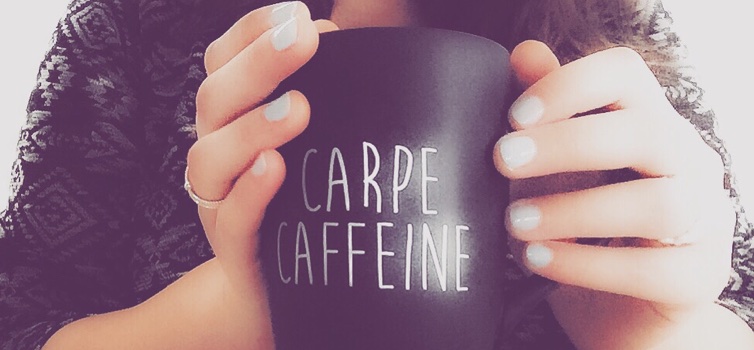
What does it mean to become yourself? Or as Jim Morrison put it above, to “be what you really are?”
And more importantly, how do you know when you get there? Is there some sort of finish line?
We’ve been taught to pursue Abraham Maslow’s pinnacle of self actualization as the ultimate expression of ourselves. But if we reach our full potential by doing the thing that fulfills our purpose and bring us joy, where else is there to go?
Jen Kim tackles the issue over at Psychology Today, and lands on the key objection to the idea of a finish line:
But here’s the problem: What if the thing that makes you happy today doesn’t make you happy a decade later? After all, if our taste buds can change as we age, why can’t the things that make us happy?
According to Harvard psychologist Daniel Gilbert, that’s exactly how it works:
Human beings are works in progress that mistakenly think they’re finished. The person you are right now is as transient, as fleeting and as temporary as all the people you’ve ever been. The one constant in our life is change.
When we talk abut midlife reinvention, it sounds like it’s some momentous one-time change. And maybe it will be for you, but it’s more likely that you’re going to keep evolving and redefining yourself incrementally for the rest of your life.
Personally, I wouldn’t want it any other way. What fun is extended longevity if you’re just going to stay static for additional decades?
You’ve never been set in stone. And now is the time to start accelerating your personal evolution. Who do you want to be next?
When Do You Really Become Yourself?
Keep going-
P.S. Did someone forward this issue of Further to you? We’d love to have you join us by signing up here.
Worse than losing your job to a robot

by Brian Clark
The workforce is in for a disruption thanks to technologies such as artificial intelligence, robotics, virtual reality, and advanced monitoring systems. That means losing your job may be only a little worse than keeping it.
For people who aren’t sacked, you’re going to have to learn to work alongside the algorithms and robots, increasingly in heavily-digitized environments. And that means all that automation will churn out data that can be used to analyze your performance.
All that new information will likely affect who is hired, fired, promoted and given raises. It may also be used to predict your future actions and even extrapolate medical conditions. Yikes.
There oughta be a law …
Problem is, if you work in the United States, it’s pretty much a free-for-all for workplace surveillance.
The United States’ regulation of the workplace has long been an outlier among much of the world. Especially for private, nonunionized workers, the U.S. largely allows companies and workers to figure out the terms and conditions of work on their own.
Some are pushing for changes in labor laws, while the strong job market might discourage companies from getting too draconian right now. But if massive job losses happen thanks to these new technologies, businesses will get away with whatever they want with the people who are desperate to stay employed.
Escape the Matrix
So maybe this is a good time to remind you of the increasing attractiveness of freelancing, and that the average age of a successful startup founder is 45. On that latter point, the New York Times did a story on that very fact just a few days ago.
Of course, the Times continues to push the media narrative that “startup” means a VC-funded, world-changing unicorn that breaks a billion. That ignores the vast majority of digital businesses that are bootstrapped, customer-focused, and designed to enrich the owners with more money and freedom.
I try to contain my tendency to push at this, because I know not everyone considers themselves unemployable as I am. But if things keep moving in the direction indicated, those with traditional jobs may end up the objects of pity, not envy.
- Your boss is going to start using AI to monitor you—and labor laws aren’t ready (Fast Company)
- Founders of Successful Tech Companies Are Mostly Middle-Aged (New York Times)
The secret power of a slow morning

By Trudi Roth
Fifty years ago, Simon & Garfunkel wrote an anthem that is as relevant today as it was back in the Summer of Love: 59th Street Bridge Song (Feelin’ Groovy). The opening lyrics are a signifier of our relentless, 24/7 digitally driven culture:
Slow down, you move too fast; you got to make the morning last …
It’s hard to feel groovy when the first thing you see each day is a barrage of texts, emails, and notifications heaping on your already crushing lists of to-dos. And yet, according to a recent report by IDC Research, 80% of smartphone users check their mobile devices within 15 minutes of waking up each morning.
The slow morning movement is emerging as an antidote to our frenzied, tech-induced pace. Proponents — including Jeff Bezos, who spends his mornings “puttering” — ditch devices in order to ease into the day.
A wake-up call from your exhausted brain
A daily digital detox each morning may just be jolt you need in the morning to lead a happier, more productive life. But don’t confuse slow mornings with sleeping in and hitting the snooze button one time too many.
The idea is to consciously choose to idle a bit before facing the virtual onslaught that kicks your day into high gear. Neuroscience says that your brain needs that kind of break in order to retain and process new information.
The way you fill that time is up to you — it can be anything from indulging in a morning ritual like journaling, reading, meditating, making a healthy breakfast, exercising, or even doing nothing at all.
Slow and low, that is the tempo
Whatever you do, the key to slow mornings is not rushing. Just as runners know, a gradual ramp-up from the starting line is the best way to build stamina, resilience, and endurance.
It’s also a game changer for your work performance. Geir Berthelsen, founder of the Norweigen think tank The World Institute of Slowness, advocates for intentional slowness in the morning as an essential way to spark creativity:
Business leaders need to take time to forget about time, and that helps them be creative when they arrive at work. That’s the goal of doing this before going into the workplace.
The best part about slow mornings is you don’t have to worry that you’re going to fall behind if you don’t hit the ground running. There’s a ton of scientific evidence that places our peak productivity sweet spot at around four hours a day.
Devoting your early hours to enjoy some uninterrupted time to yourself actually sets the scene for you to be more focused, calm and, well, feelin’ groovy all day long.
- What’s the Rush? The Power of a Slow Morning (Wall Street Journal)
- Why Slow Mornings May Be the Secret to Tech-Life Balance (Medium’s Elemental)
further: flashback

The Pixies – Where is My Mind?
Live at London’s Town and Country Club, 1988
This week’s Flashback is Where is My Mind? (a very Gen X song) by the Pixies (a very Gen X band). And it always brings to mind the final scene of Fight Club (a very Gen X film). (YouTube)
further: sharing
Please forward this issue of Further to a friend. Thank you!
